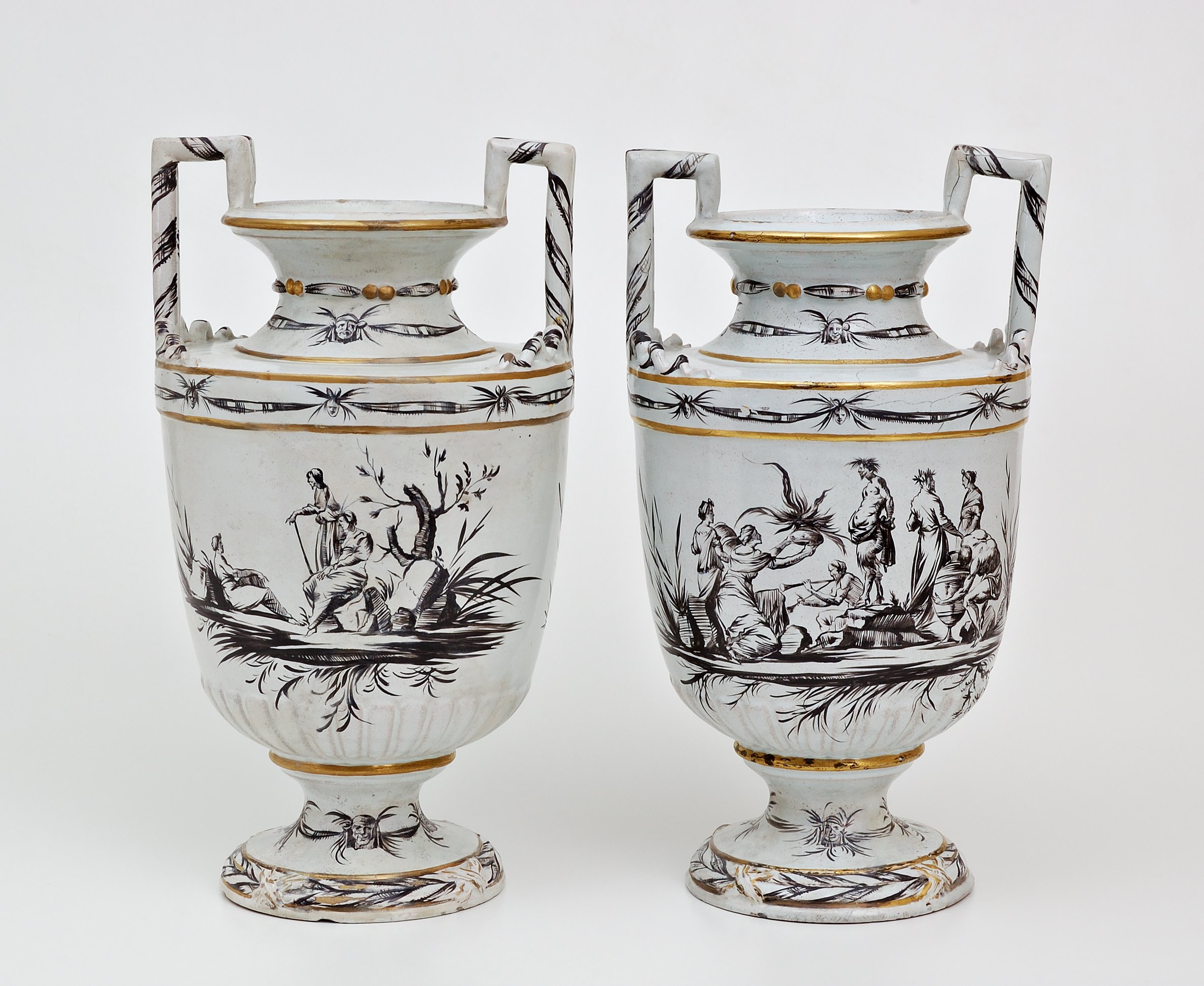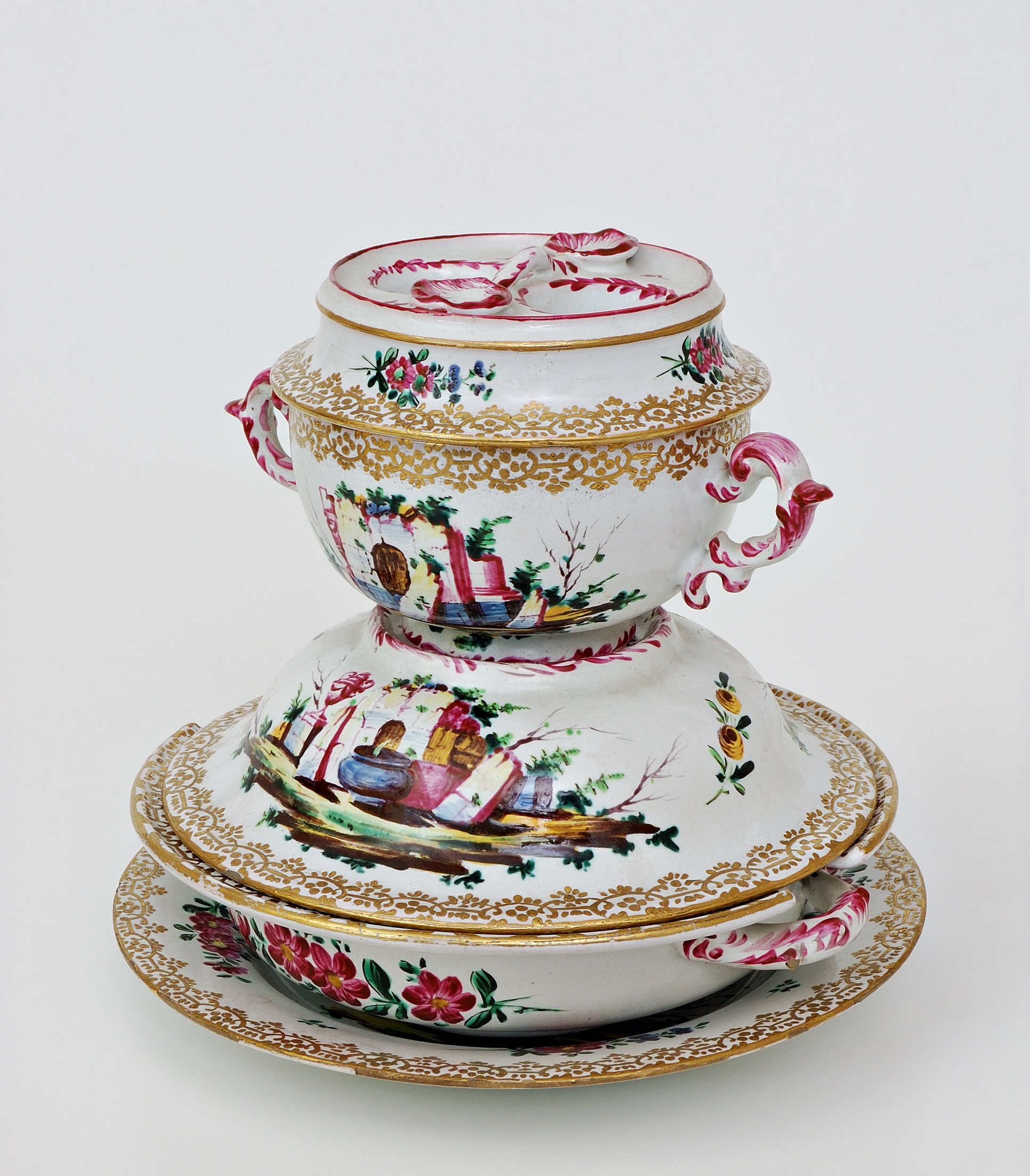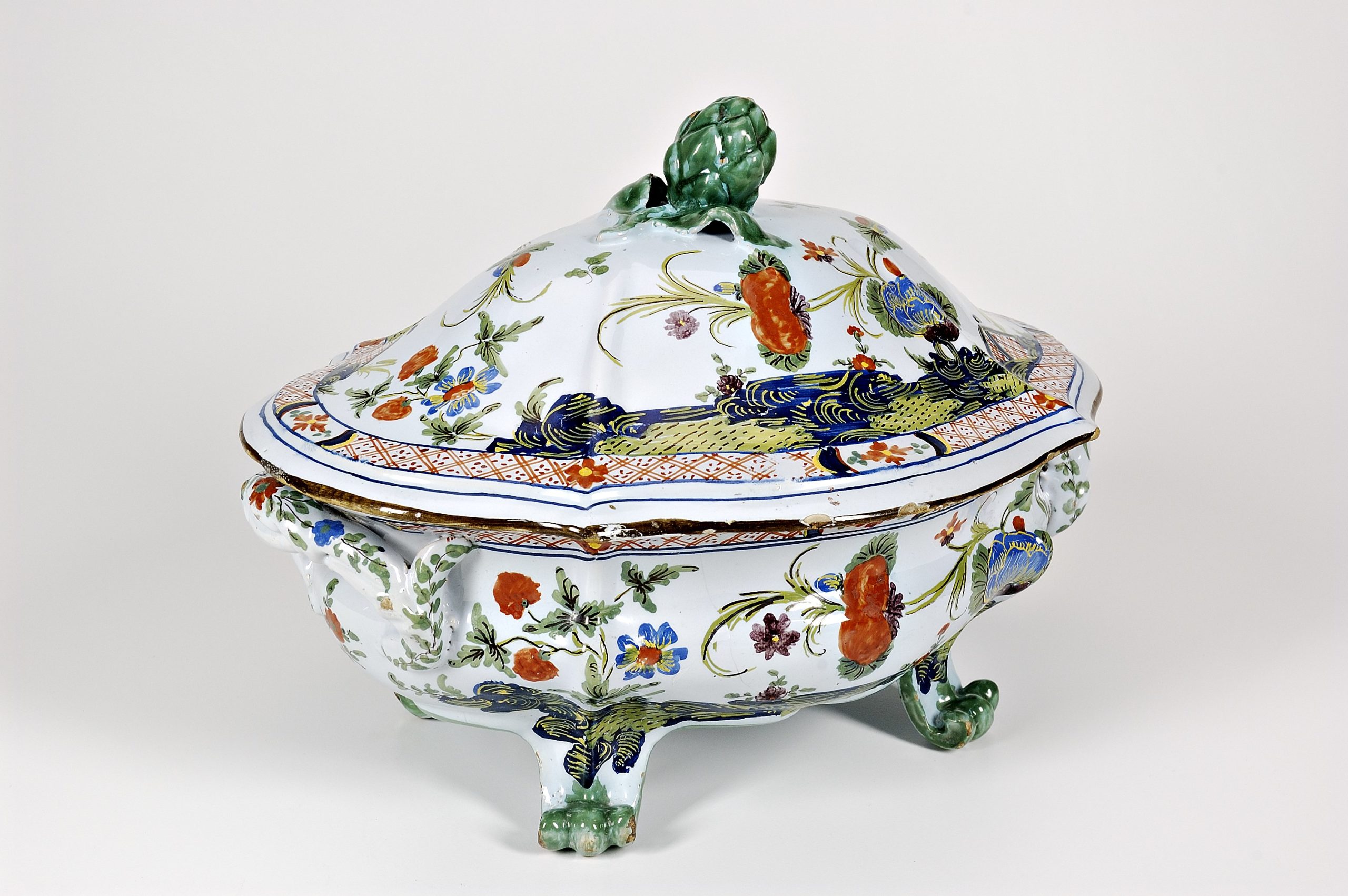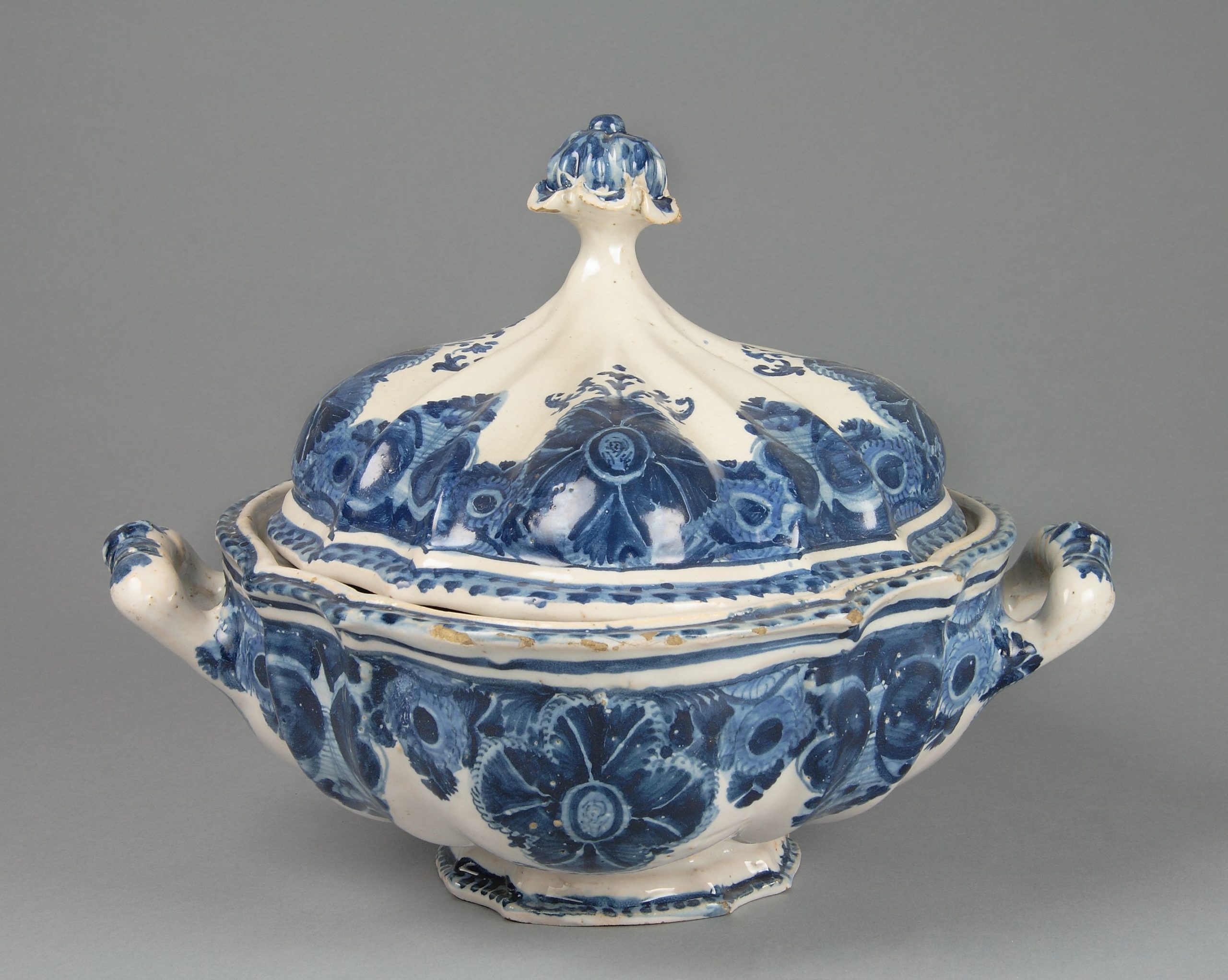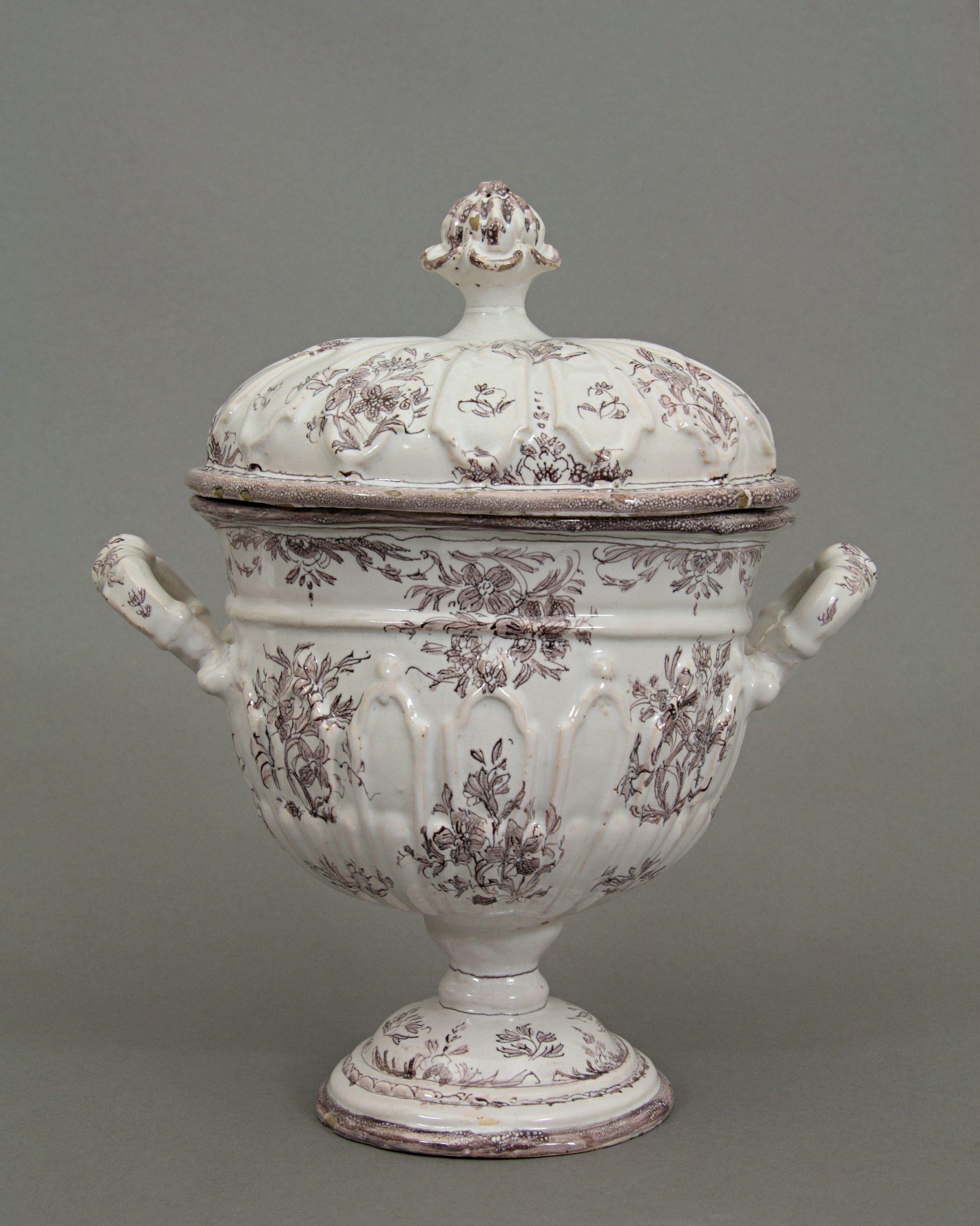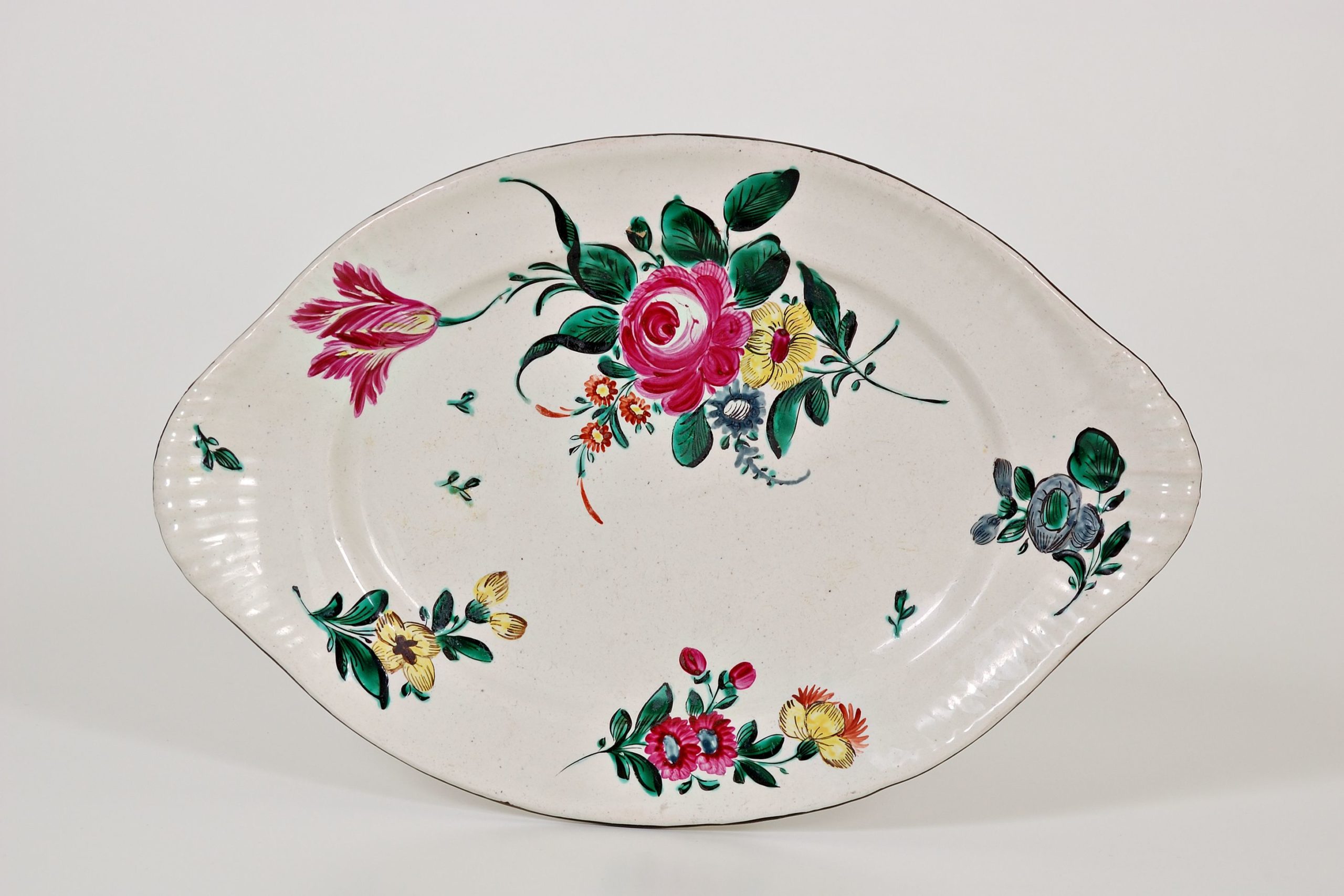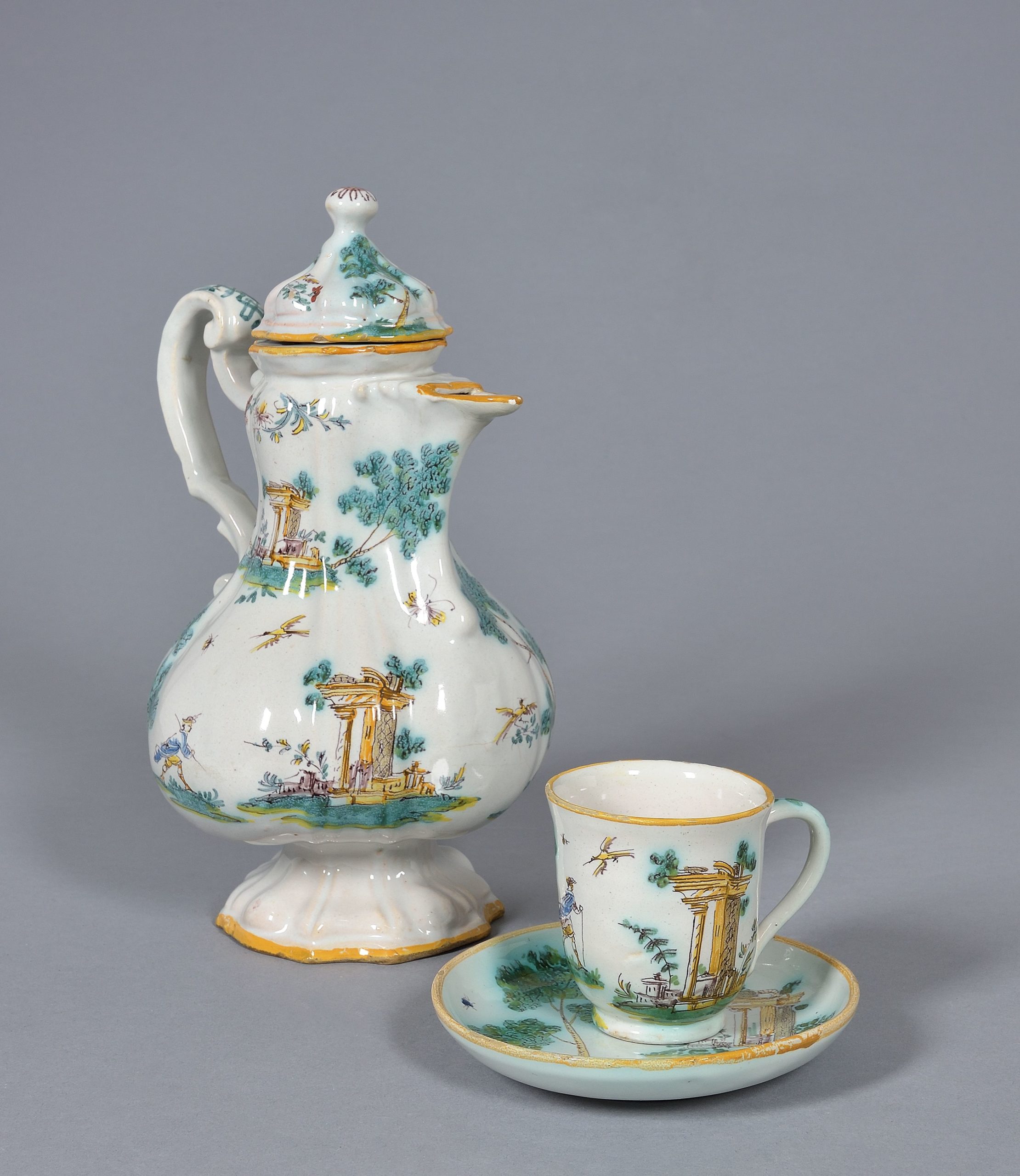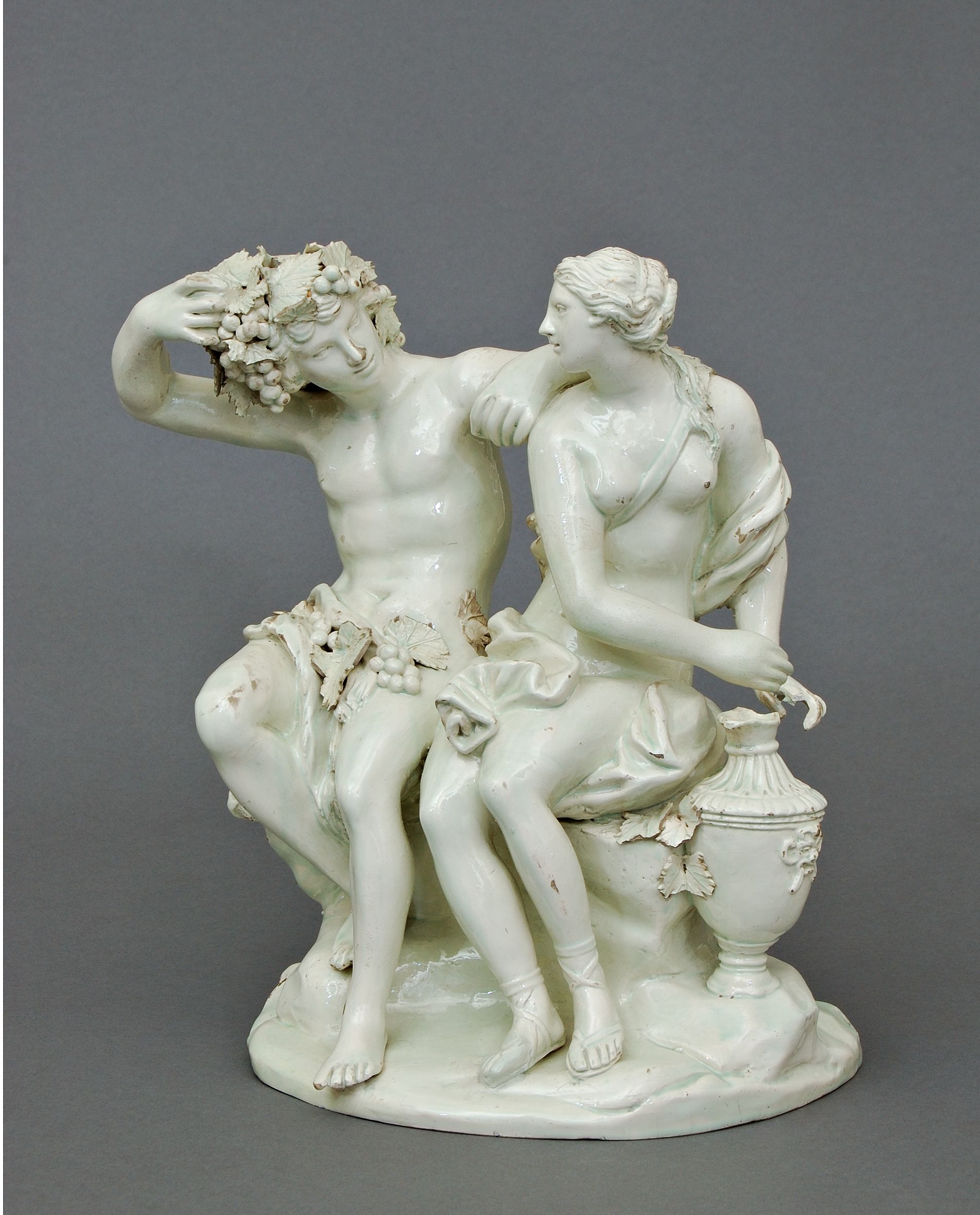In Faenza, the prestige of the art of maiolica, starting from 1693, was linked to the manufacture of the Ferniani counts. For two centuries this production characterized and dominated the artistic panorama of the city. In continuity with the previous tradition of the “whites”, towards the middle of the 18th century the Faenza plant opened up to a decorative taste that was influenced on the one hand by European fashions, especially French, and on the other by exotic suggestions, such as chinoiserie, fuelled by the massive importation of Chinese and Japanese porcelain by the Compagnie delle Indie. Like other Italian manufactures, the Ferniani plant, for the most valuable production, extended the research on colours, in particular purple red and gold, introducing the “third firing”.
The works painted by the Lombard painter Filippo Comerio stand out in the collection. He created a new style made of figures and ruins, drawn in black and filled with a bright emerald green. The eighteenth century Faenza includes the typical repertoires of the neoclassical movement that gave rise to decorations that later became traditional such as the “acorn”, the “festoon” and the “vine leaf”.

